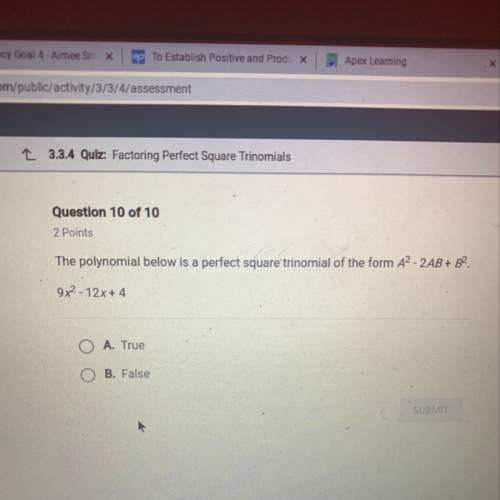
Mathematics, 27.08.2021 18:50 KylaChanel4756
Quadrilateral ABCD undergoes a reflection across the x-axis to form quadrilateral A'B'C'D'. The coordinates of A' are ( , ). The reflected quadrilateral A'B'C'D' is then translated 3 units right and 2 units up to form quadrilateral A"B"C"D". The coordinates of A" are ( , ).

Answers: 1


Another question on Mathematics

Mathematics, 21.06.2019 16:20
Ivan began dividing g2 – 6 by g + 1, noting that . he started by placing g in the quotient, as shown below.what is g2 – 6 divided by g + 1? g – 1 – g + 1 – g – 7 + g – 5 +
Answers: 3

Mathematics, 21.06.2019 18:30
Let f(x) = 3 − x . find the average rate of change of f(x) from x = a to x = a + h and simplify your answer so that no single factor of h is left in the denominator.
Answers: 1

Mathematics, 21.06.2019 18:30
What is coefficient of the term of degree of degree 5 in the polynomial below
Answers: 1

Mathematics, 21.06.2019 21:00
Which expression is equal to (21)(7)(3x) using the associative property? (21 · 7 · 3)x (7)(21)(3x) 32(7 + 3x) (3x)(7)(21)
Answers: 2
You know the right answer?
Quadrilateral ABCD undergoes a reflection across the x-axis to form quadrilateral A'B'C'D'. The coor...
Questions














Business, 07.11.2019 01:31





Computers and Technology, 07.11.2019 01:31




